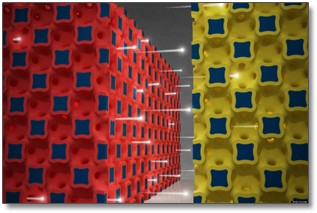Mighty Power in a Microbattery
By Samba Lampich
Most Smartphone and tablet users have had a quick moment of panic when their devices alert them that their battery is almost dead. They dread being tethered to an outlet while it charges.
But now, in this fast paced, tech-driven world, researchers have built new batteries that charge instantly and hold hours of juice.
Researchers at the University of Illinois at Urbana-Champaign developed a small, dense battery that can charge 1,000 times faster than normal batteries and release a lot of power. Professor William King who headed the researchers says the microbattery is so powerful the power storage device in a cellphone could be used to jumpstart a car battery. The group is working to make the batteries small enough to fit inside a “credit card-thin” device.
How Did They Do It?
According to the researchers, the secret to creating the microbattery was miniaturizing the anode and cathode. King and his group used materials science and engineering professor Paul Braun’s method of miniaturizing the cathode to develop a matching anode. The two were then assembled in a 3D microstructure to make a completely new battery with superior performance.
Solving Existing Battery Problems
The problem with existing batteries is that they can release energy very quickly but store only a small amount, or they can store a large amount of energy but release it very slowly. Capacitors express their power very quickly but don’t store a lot and lithium-ion batteries hold a large amount of energy but take a long time to charge. These new microbatteries offer the best of both; holding much energy and expressing the charge quickly. Ideally, a cellphone could be fully charged in one second.

Photo credit: The Beckman Institute for Advanced Science and Technology
The graphic illustrates a high power battery technology from the University of Illinois. Ions flow between three-dimensional micro-electrodes in a lithium ion battery
Potential Uses of Microbatteries
With their ability to charge quickly and hold a lot of power, these microbatteries could be used in medical devices and laser sensors where their electronics are small but their batteries are large. “Now we can think outside of the box,” said James Pikul, a graduate student who worked on the project. “It’s a new enabling technology. It’s not a progressive improvement over previous technologies; it breaks the normal paradigms of energy sources. It’s allowing us to do different, new things.”
Classroom Discussion
- What other devices would benefit from these microbatteries?
- How would this kind of battery affect other sources of energy, such as solar?